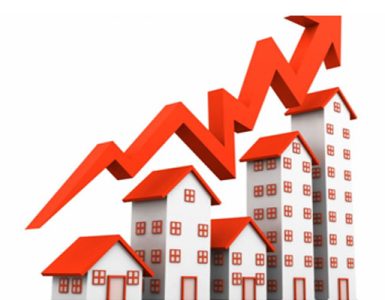
Many Canadians love investing in real estate south of the border. It’s especially the snowbirds who see the benefits of browsing through dozens of amazing houses for sale in Miami, Canadians’ favourite vacation destination in the U.S., and choosing the most beautiful properties for their vacation homes. After all, nothing can make you forget the Canadian winter faster than a walk on a sunny beach with the ocean breeze in your hair and water at your feet!

But according to a recent study by real estate platform Point2 Homes, snowbirds shouldn’t be the only ones looking to buy property in the U.S. Although both Canada and the U.S. are struggling to solve their housing affordability issues, the situation might be sunnier south of the border, and not just in Miami.
In the past ten years – Point2 Homes’ timeframe for the analysis of the two housing markets -the average home price increased more slowly in the U.S. compared to Canada. As a result, in 2018 Canadians were paying 56% more for the average home than they were in 2008, while Americans, on the other hand, only saw a 24% increase in the average home price.
In the rental sector, ten years has made a great difference. However, the evolution of the average rent has been more in line. Canadians’ average rent has gone up 25%, only 1% more, on average, than the 24% increase experienced by American renters since 2008.
Increases in income did not keep up, as constantly rising real estate prices, and cost of living, in general, have all but erased U.S. and Canada’s workers’ wage gains. But Americans are slightly better off: while Canadians’ income only went up 15% since 2008, the median wage of a U.S. worker increased 18% during the last decade.
Looking at the data so far, it becomes apparent why homebuyers in the U.S. have it better than their neighbours in the north. The increases in home prices and rents have definitely eclipsed the wage increases in both countries, but the pace of growth in those three areas favours the average American looking to buy a home more than it does the average Canadian.
Naturally, with such a discrepancy between the evolution of home prices and incomes in both countries, committing to a mortgage has become very challenging. The share of homeowners started decreasing on both sides of the borders, but in this case, Americans lost more ground.
After the destabilizing housing crisis, the U.S. witnessed asharp decline in the percentage of owners, for while 67.8% of Americans owned their home in 2008, in 2018 that share fell to 64.2%.
Canada’s real estate bubble hasn’t popped, and the country has not yet seen a major decline in home prices, but the Canadian economy experienced its own share of turbulence following the oil price crash in 2014 and the burst of China’s speculative bubble. Coupled with some other unfavourable economic twists, Canada’s share of homeowners fell from almost 69% in 2008 to 67.8% in 2018.
There has been extensive research pointing to the significanteconomic, social, and psychological benefits associated with homeownership. And although homeownership is considered an integral part of the American Dream, Canadians have equally strong aspirations to own their homes.
In the U.S., homeownership rates reached a peak towards the end of 2004, when the percentage of homeowners settled around 69.2%, only to start decreasing in 2007. By 2015, the share of homeowners in the U.S. fell to 62.9%, the lowest level since 1965, when data gathering was just starting. After three years of recovery, the share of homeowners in the U.S. is currently pegged at 64.2%.
In Canada, homeownership rates rose at a steady pace for the past forty years, only to start going down following the economic downturn from 2014. At the time of the most recent Census, the share of homeowners in Canada declined for the first time in almost half a century.
With economic growth that does not translate into growing wages, especially in the U.S., and with gains constantly eclipsed by rising prices, the unaffordability nightmare looms large. But is the U.S. or Canada more affected?
The affordability ratio represents the median home sale price divided by the median annual household income; therefore, the higher the ratio, the more unaffordable the market.
While in 2008 the national unaffordability ratio in Canada was pegged at 4.9, which placed the country in the “seriously unaffordable” category, in 2018 it climbed to 6.7, which is far into the “severely unaffordable” end of the spectrum. As RBC‘s latest report also points out, “Canadian housing affordability is now at its worst level since 1990.”
The U.S., on the other hand, remained in the “seriously unaffordable” category, going from a ratio of 4.7 in 2008 to 4.9 in 2018.
While housing unaffordability is influenced by many factors, it is most closely linked to the issue of the barely growing, or even stagnating median wages, coupled with the accelerated growth of home prices. And judging by the evolution of the affordability ratio in the two countries, Canadians seem to be harder hit than their American neighbours.
There is currently a debate between bullish market analysts, who claim that all is well in residential real estate, and bearish prognosticators, who see a storm on the horizon. But while the future path of the housing market is difficult to pinpoint, there is no doubt that homebuyers in both countries face ever-tighter conditions.



































Add comment